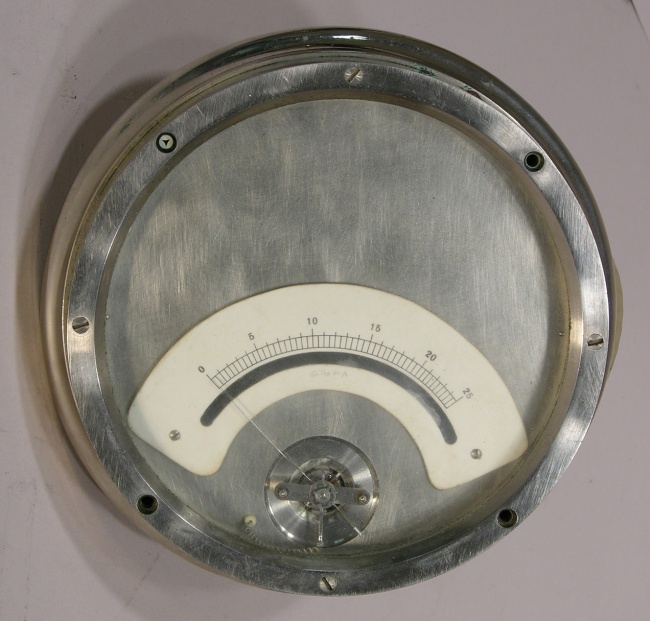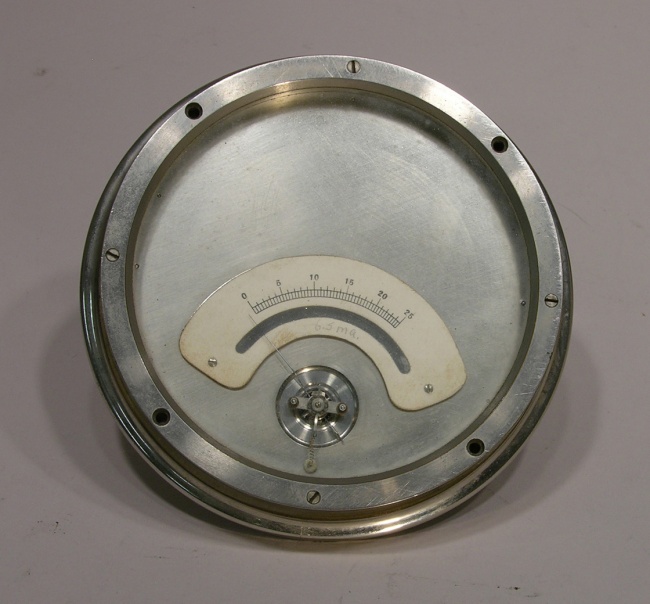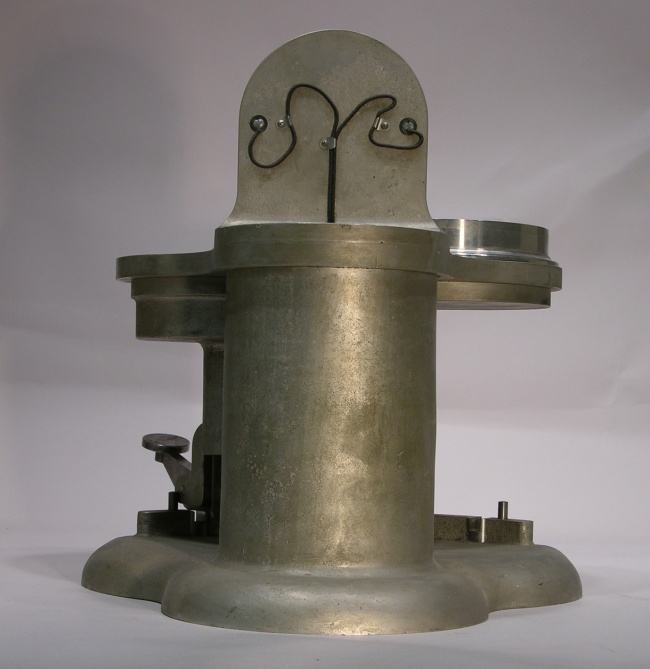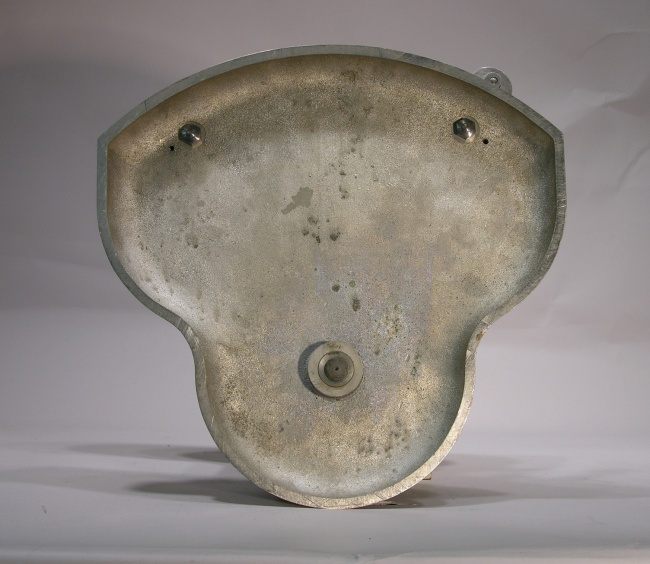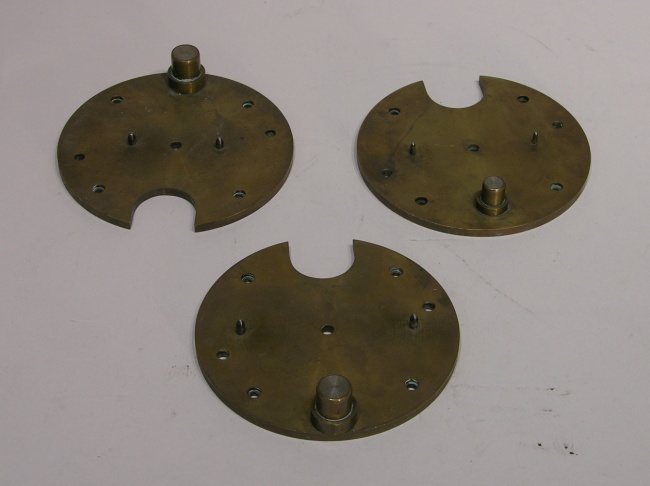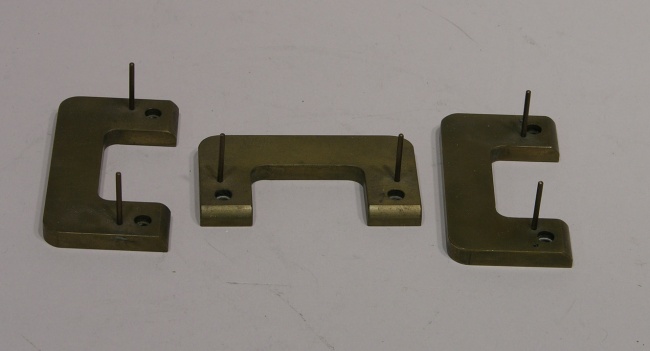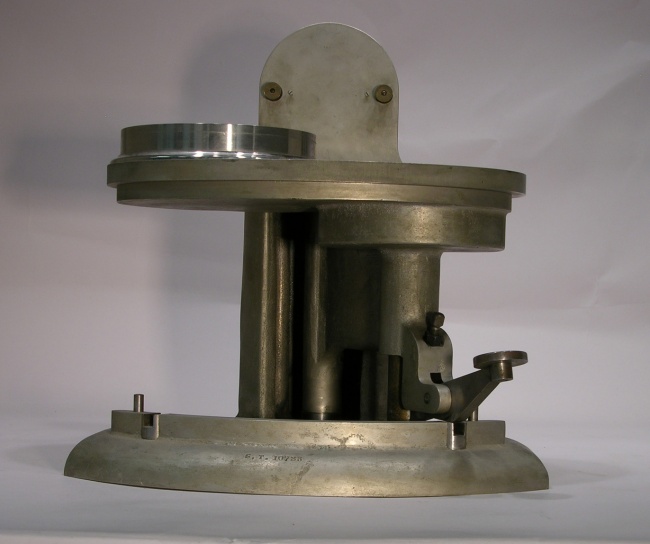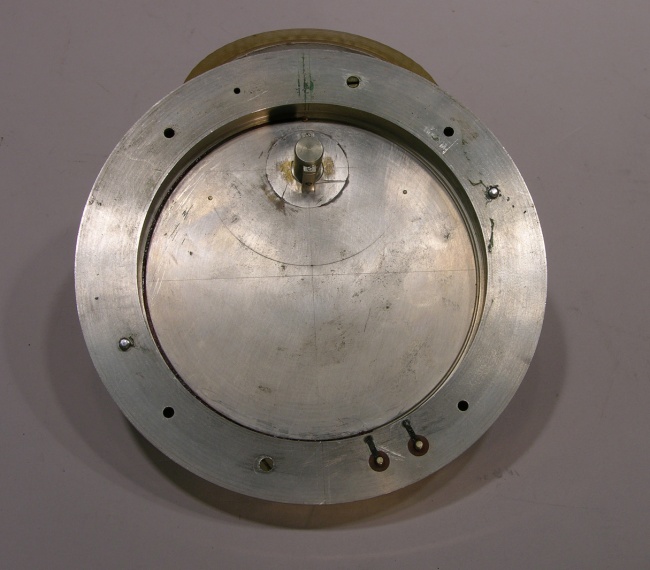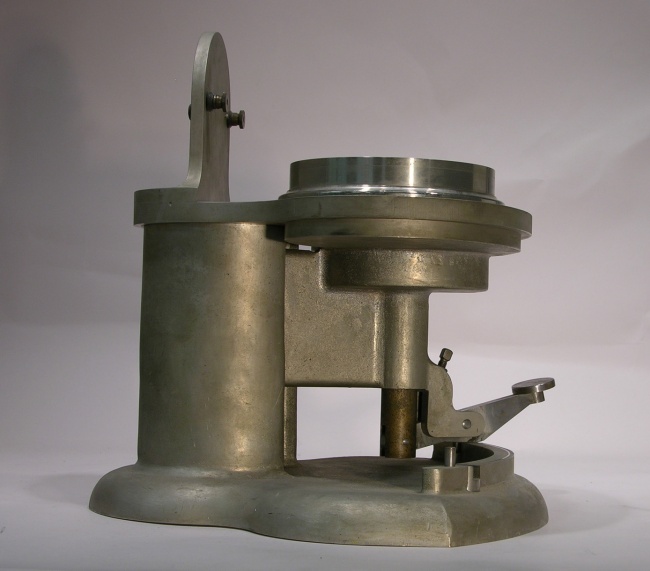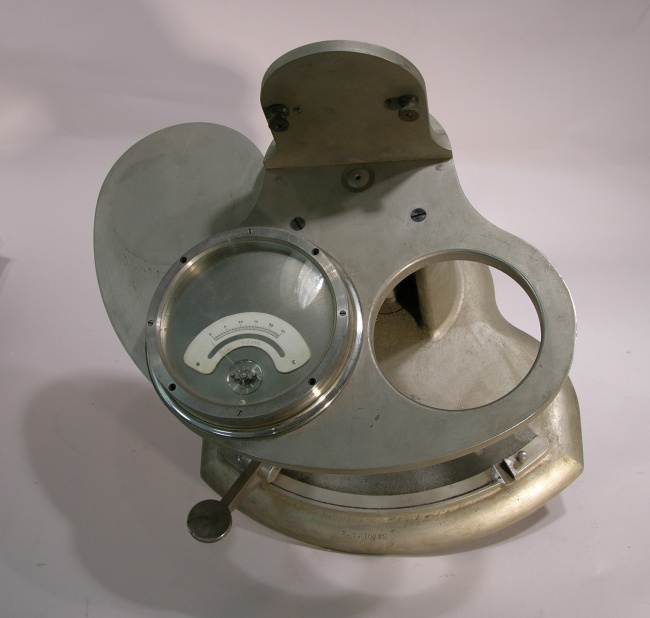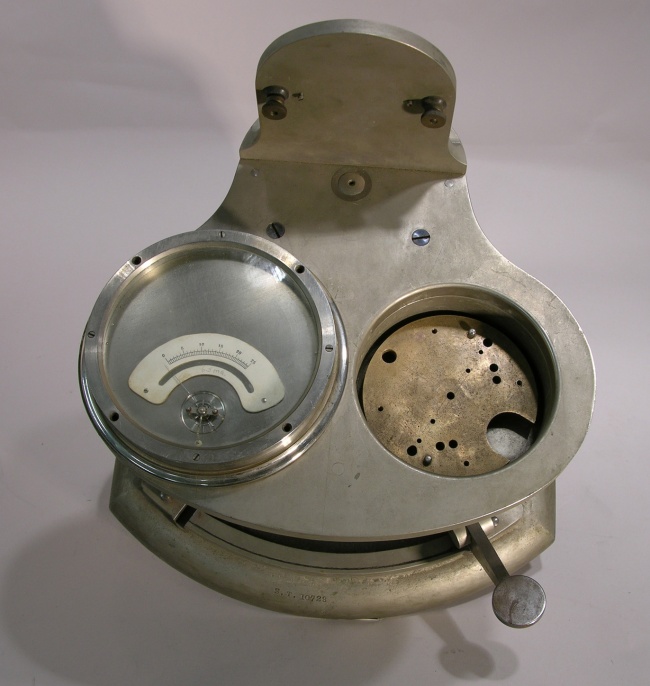Mystery objects
Information about objects, images and documents can get lost through the ages. This space on the ETHW is a place where you can post (or respond to) objects which need identification of further information.
Unknown meter
Finding unknown objects is one of the fun parts of working in a museum like the Smithsonian, where collections date back to the mid 1800s. Here are images of an object that the Smithsonian Institution is asking for help to identify. It is a type of electrical measuring instrument with 2 interchangeable meters, 3 brass disks and 3 brass plates.
The operator selects a brass disk and / or plate and mounts it inside the opening next to the meter. A lever allows the operator to actuate the unit. Once the sample is in place one slides the lever to the left, positioning the sample under the meter. One then pushes the lever down to raise the sample into contact with a connector mounted on the underside of the meter. Two electrical connectors can be seen near the top of the unit in the front views. Conductors (back view) lead into the unit. Two red insulators mark the connectors for whichever meter is used.
The overall dimensions of the unit (open) are 12.5" h x 12" w x 12" d, and it weighs about 30 pounds. The unit is stamped: "S.T. 10723". There are no other markings.
Two meters are associated with this unit and are 1" h x 5.5" dia. They are marked "6.5mA" and "5.76mA" respectively and fit on pins set in the unit, simply lifting off. Both have scales graduated 0 through 25. It is unclear what they are measuring.
The 3 identically-sized brass disks fit on the pins set in the movable base plate in the unit. All three have a different pin spacing: 1-13/32", 2", and 2-7/16" on center, respectively. Only one at a time fits in the unit.
There are also 3 brass plates that don't seem to fit anywhere. Two of the plates are identical, the third has a different pin spacing. Spacing on the former two are 1-15/16" and the latter is 1-21/32" on center.
We have no record of who made this device nor where it was used. Anyone who might be able to identify this piece should post their ideas using the "Discussion" tab or contact Hal Wallace, Associate Curator, Electricity Collections at wallaceh@si.edu
